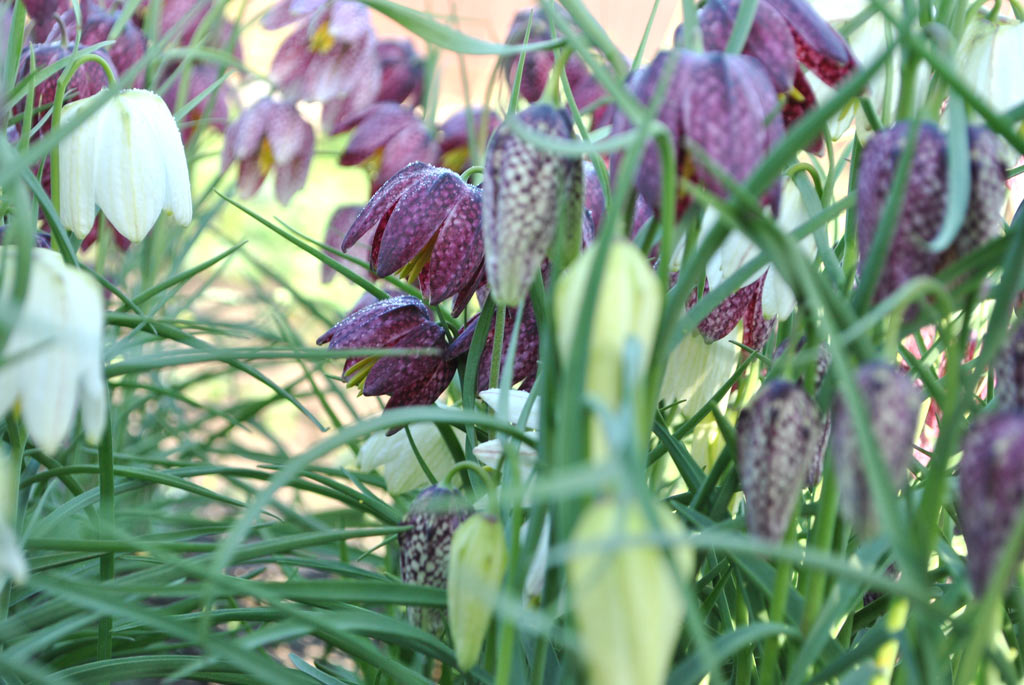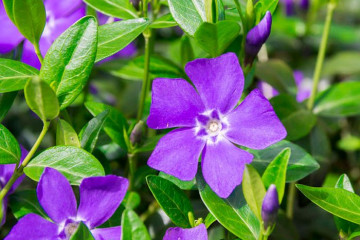Grouse chess: planting and care in the open field
Content:
The owners of garden and summer cottages have to constantly think about which flower crops will be in harmony with the already established flower garden and how to organize the periodization of flowering so that the plants can delight the eye throughout the season. In this situation, perennial flowers - hazel grouses come to the rescue. These modest, but surprisingly cute plants, thanks to their diversity, will transform the site, adding their own unique characteristics to the overall picture.
Botanical description
Chess grouse (or mixed fritillaria meleagris) is a herb belonging to the Liliaceae family. Another name is "paradise tree" and "glass". The plant received these very unusual names among the people due to its appearance. In Eastern European countries, the most popular name is hazel grouse, so named because of the checkered color.
Botanical Description:
- A perennial unpretentious herb up to 35 cm high. Suitable for planting in flower beds and on the sides of paths.
- Habitat - Central and Eastern Europe, Russia. Habitat - mountain slopes, forests, ravines and steppe zones.
- It has a small flattened bulb and a low, thin stem, which is covered with tubercles below.
- The foliage is small. Bright green-gray thin leaves are elongated.
- One flower has the shape of a glass.
- Lilac flowers are strewn with light blotches, which are staggered.
- The flowering period is late April - mid-May.
The main varieties of hazel grouse
In total, there are from 80 to 180 species of hazel grouse, with only 30 of them suitable for cultivation. The most popular are:
- Grouse Alba (Meleagris Alba). The variety is bright and unusual. The height of the alba hazel grouse is up to 20 cm. The flowers have a white color with a green spot. It prefers to grow in partial shade under trees and shrubs. The beginning of flowering of hazel grouse meleagris falls in late spring - early summer.
- Grouse Radde (Fritillaria raddeana). Plant height up to 80 cm. Leaves are dark lanceolate, large wide bell-shaped flowers have a pale yellow or cream color. Clusters of inflorescences are loose, the direction of flowers is versatile. An early variety of hazel grouse, Radde, is able to withstand late frosts. The beginning of flowering is the first half of May.
- Grouse Lutea (Fritillaria imp lutea). Plant height - up to 90 cm. Large flowers have a bright light yellow color. In an inflorescence up to 8 petals. The petals can be up to 7 cm in length. The green leaves are rather narrow. The beginning of flowering is mid-May.
- Grouse imperial (Fritillaria imperialis). Plant height - up to 1.5 m. The spherical bulb reaches 10 cm in diameter. Lanceolate foliage is located on the stem in 3-4 whorls. 3-5 flowers - in a single umbellate inflorescence in the upper part of the shoot.
Distribution and ecology
Under natural conditions, hazel grouse grows most actively in the temperate latitudes of the Eurasian and North American continents.However, the place of the greatest distribution of this culture is Asia Minor, where many of the species of fritillaria originated.
In Russia, it can be found in the central regions of the European part. Grows in forests, meadows and slopes. In mountainous areas, it is found mainly at the base or in the middle belt.
Necessary security measures
Since the natural thickets of hazel grouse are significantly reduced every year, it is listed in the Red Book and needs protection. Restrictive measures include bans on harvesting, certain haymaking times, and prohibitive grazing measures. Effective control systems are in place to stop the illegal collection of protected plants. Regular searches for new locations of flower growth and protection of the found populations are carried out.
Hazel grouse as an ornamental plant
Grouse fritillaria has been known since the 16th century. Cultural specimens have 2-3 flowers. Some of the flower species have been cultivated in gardens since the Middle Ages. And although at the moment only about 30 species have been introduced into culture, not all of them are able to attract attention. The most widely used are hazel grouse and imperial hazel grouse.
Many flower growers have heard about the hazel grouse. The most rarely grown species are Russian and Kamchatka hazel grouse.
Use in landscape design
The hazel grouse is widely used for landscape decoration. Due to its unusual delicate appearance, the flower looks great in a rock garden. In combination with other plants, it helps to build vibrant flower arrangements. In addition, it is perfect for planting on the lawn or in the beds.
Breeding hazel grouse
The hazel grouse reproduces in only two ways - by bulbs and seeds.
Bulb propagation
This propagation method can be used in cases where the bulbs become cramped on the site, and they begin to experience a lack of space. The best breeding season is late summer.
In order to propagate the hazel grouse with bulbs, you need:
- Carefully dig out the flower, do not remove the earthen lump.
- Separate small baby bulbs from the plant.
- Land them on a pre-prepared area.
With the onset of autumn, cover the planting with mulch. This will insulate the habitat of the future flower.
Seed propagation
Since the hazel grouse has a seed capsule, it is able to disperse the seed on its own. He does this in a random way, and the flowers are planted in a very non-systematic way. Few of the flower beetles are satisfied with this situation, so many resort to transplanting the hazel grouse in a place specially designated for it. But it is best to plant the plants in the desired area immediately and manually.
Landing order:
- Collect Seeds - Collect in mid-July.
- Prepare the soil and the area where the seed will be sown.
- Deepen the seeds into the ground by 1 cm, but no more.
- The first gatherings can only be expected by next spring.
They will begin to bloom only after 3 years.
Planting a plant
Planting in the open ground and caring for the hazel grouse is a relatively simple matter. But in order to do this correctly, you need to know some rules.
The most optimal time for planting hazel grouses is the end of summer. Many of the flower growers do not recommend transplanting from the site for up to 3 years in a row.
Seat selection
A sunny place in the garden is suitable for planting, while the hazel grouse will feel normal in a small partial shade. It is recommended to protect the site from gusts of wind and water stagnation.
Watering
It is necessary to ensure that the soil on the site does not dry out. The bulb must be kept in moist soil at all times. The soil should be moistened about 2 times a month.
Fertilization
The first top dressing should be carried out in mid-spring with dry fertilizers with nitrogen microelements. Experienced flower growers also use humus, chicken droppings, and wood ash. After flowering, when watering, hazel grouses should be fertilized. In this case, superphosphate and potassium sulfate are suitable.
Loosening and mulching
At first, the soil around the plant should be loosened regularly. This must be done with care so as not to touch the roots located in the upper layer of the earth. Sawdust or peat is usually used for mulching.
Plant care
Grouse is a very unpretentious plant, so it is quite easy to care for it. However, especially demanding growers who want to achieve truly high-quality flowering will still have to devote some of their leisure time to the flower.
Shelter for the winter
The plant tolerates small temperature fluctuations quite easily, so no special measures need to be taken. However, in case of severe frosts with minimal precipitation, the plant must be covered with spruce branches.
Fertilization and feeding
When the last frosts are over, the flower needs to be fed with complex mineral fertilizers and humus. Fertilizers are applied on top of the soil right next to the flower. During the flowering period, wood ash should be used, and after the flower begins to fade - superphosphates.
Diseases and pests
The hazel grouses have an amazing feature - the smell of their bulbs repels many pests, but unfortunately not all. The most common beetle on this plant is the leaf beetle, which harms the leaves and buds. The consequences of the activity of this insect are disposed of by treating the plant with insecticides. In addition, the flower can suffer from slugs and wireworms.
The flower is quite resistant to all sorts of diseases, while sometimes it can rot. In this case, the most effective solution would be to remove the affected parts by cutting them out.
Growing checkerboard hazel grouses is an excellent learning experience for aspiring florists. The process of planting and leaving is quite interesting in itself and gives a lot of opportunities for the implementation of plans for the cultivation of the site. At the same time, the result of cultivation will allow you to enjoy the whole palette of colors presented by this wonderful flower.




















